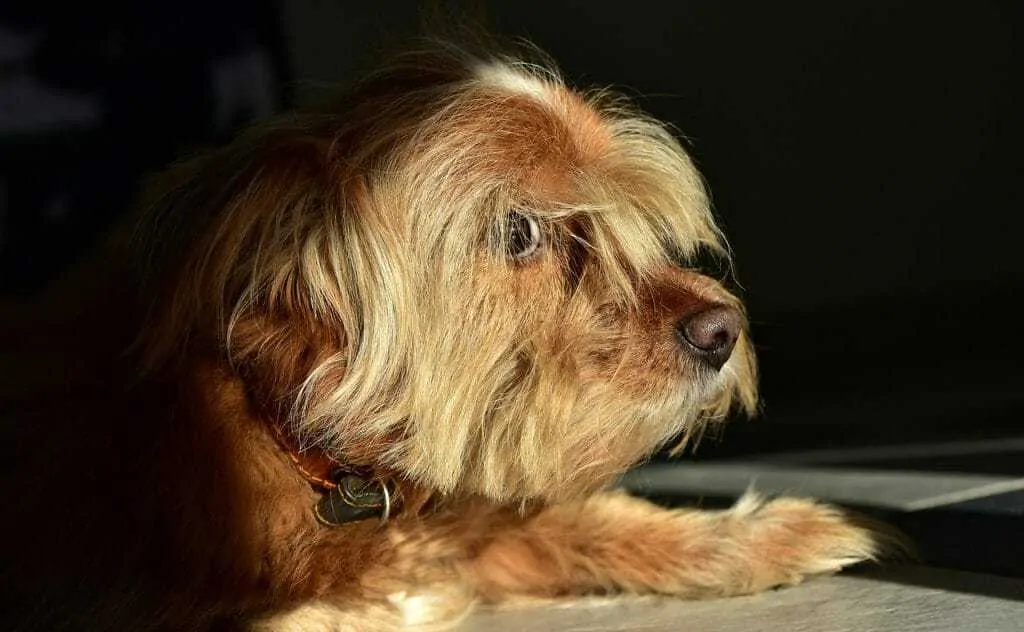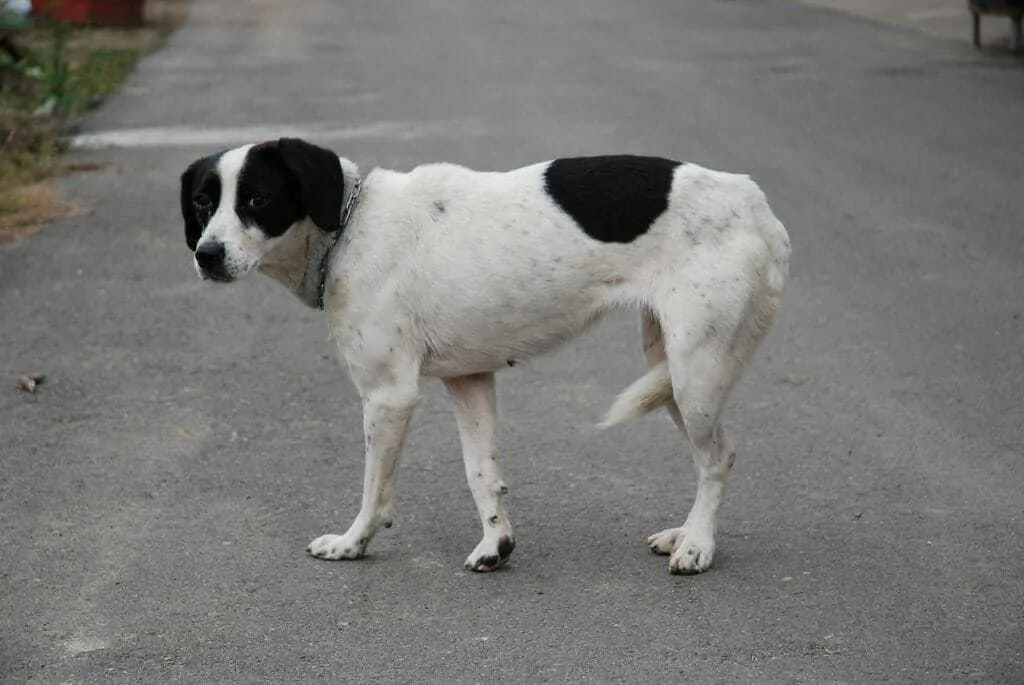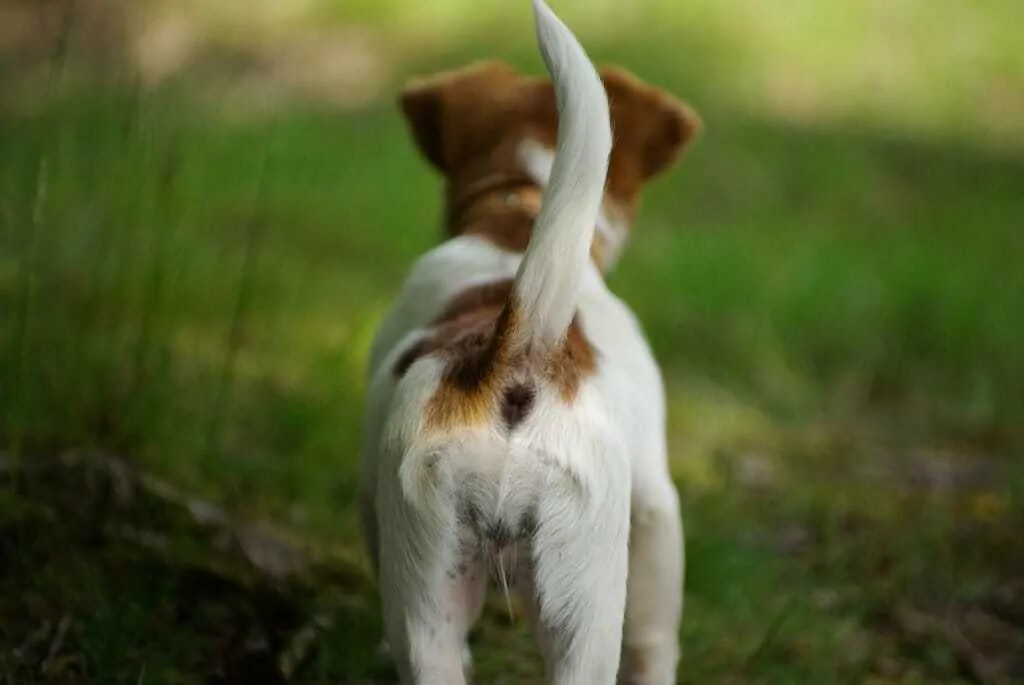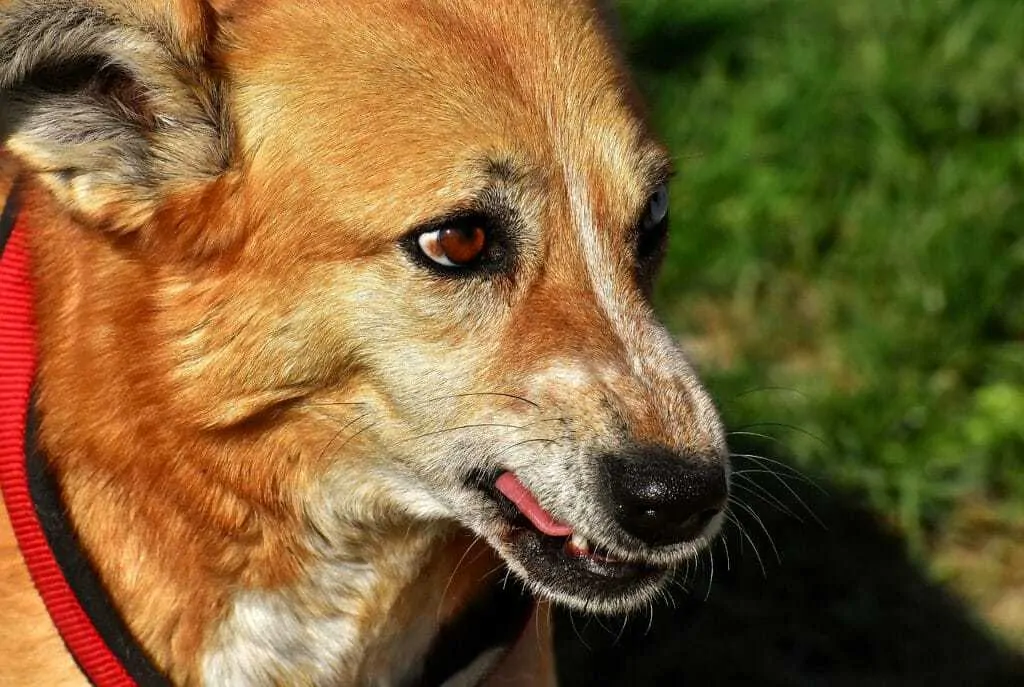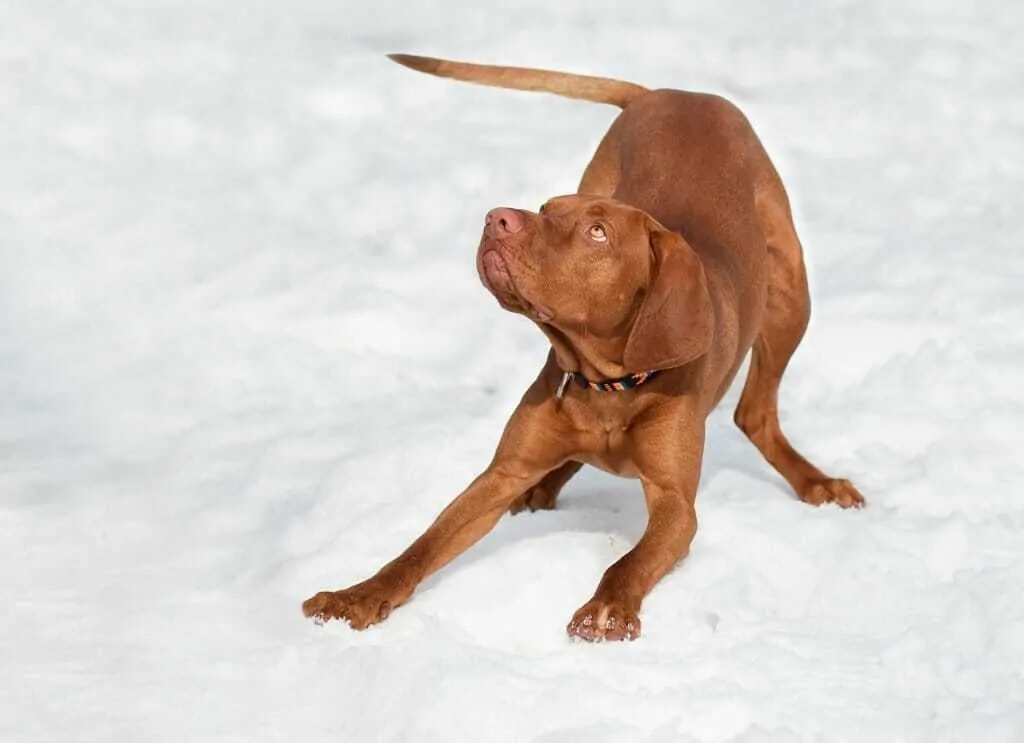It is amazing how much a dog communicates through their body language. Unlike humans, it is so much more than any vocalisations they use may convey.
When we think of canine body language we often think of tail wagging, lip curling when growling and a dog putting their hackles up. It is so, so much more than this and there are a whole host of very subtle signals that your dog may be trying to convey without you even realising it.
If we ignore or misunderstand what our dog is trying to communicate this can end in a fight between dogs or a bad interaction with a person. If we continually ignore these signals it can end up with a dog bite happening.
My blood curls when I see the many videos that are shared on social media of toddlers being ‘cute’ with the family dog. They may be trying to sit on them whilst they are sleeping, or perhaps they are constantly putting their hand in the dog’s mouth or chasing them behind the sofa. These videos are usually full of subtle signals that the dog is very uncomfortable. The dog is trying to convey this through a variety of body language signs that are being ignored or misunderstood. The parents obviously don’t understand the risk they are putting their child at and how unfair they are being to their dog.
In this article, we hope that we can help you understand a bit more about what your dog is telling you and how to learn when they are relaxed, angry, nervous or fearful.
Child and dog interactions need careful supervision. This dog may not be totally relaxed, their ears are back and they are lipping their lips
Contents
Don’t forget to look at the entire body and evaluate the situation
It is really important that when you are evaluating your dog’s body language that you take into account the whole body and also the situation you are in. Sometimes certain signals can seem similar. You may be surprised to know that dogs don’t just wag their tail when they are happy. Tail wagging can actually also be a sign that a dog is feeling tense. Tail wagging is more just a sign that the dog is ready to interact. If the wag is slow, swishing back and forth and relaxed this is usually a happy greeting. If the tail is very erect and stiff and the wag is more of a quick vibration then it is a sign that the dog may be feeling tense about the interaction.
Happy Dog Body Language
Ears: A happy dog will usually have a relaxed, neutral ear position. They may be sitting back, but not pinned against the head or forward and relaxed rather than pricked up stiff to attention.
It is easier to interpret ear language on dogs with short and upright ears. For floppy-eared breeds, more careful observation is required, paying close attention to the movement at the base of the ear.
Eyes: A happy and relaxed dog will have soft eyes and will often squint their eyes making them look sleepy.
Mouth: A relaxed dog often has an open mouth, their tongue may be lolling and their mouth can turn up at the ends, making them look a bit like they are smiling. There will not be any tension in their mouth position.
This dog has a happy expression with a relaxed open mouth, lolling tongue, soft eyes and ears
Tail: A relaxed tail posture is usually a very soft one. The tail may be down (but not tucked under), or straight rather than fully erect. If it is wagging it will usually be a gentle sway back and forth or in a circular, propeller, motion.
Some dogs have docked or bobtails and some have naturally erect and curling tails (like a Shiba Inu) so it can be difficult to interpret what the tail may be telling us. I find it much easier to interpret my dog Annie’s tail language to my previous Cocker Spaniels tails. Annie’s is a long, full tail and Daisy and Sam both had docked tails. It was still possible to interpret the signals that Daisy and Sam were giving through their tail though with a bit of practice.
Body posture: A relaxed dog will have a loose body posture and their feet will usually be flat on the ground. A dog that is lying down is usually a relaxed one (unless pressed flat to the ground or rolled over in fearful submission) and if you see them in a frog-like position with their hind legs spread out behind them or on their side this is usually a sign they are feeling very comfortable.
You will also sometimes see a relaxed and happy dog do a play bow, inviting friendly interaction.
One very relaxed looking puppy feeling comfortable enough to lay on their side
Anxious /Fearful Body Language
The signals that your dog is frightened are often widely misinterpreted. For example, there has been a recent trend in ‘dog shaming’, a dog has done something that is considered naughty and when they have been reprimanded by their owner they have looked ‘guilty’ which seems very funny. The danger with this sort of anthropomorphism is that we are attributing human emotions onto our dog and they are actually displaying signs of being uncomfortable and fearful instead. If these are ignored, your dog’s anxieties are likely to increase and it can escalate down the line into an aggressive response.
It is often common for the signals to be ignored whilst at the vet and this can be why dog’s develop an aversion to visiting the vet.
Ears: These will often be pinned flat back against the head
This dog has ears pressed flat against the head, wide eyes and a closed mouth. They look nervous
Eyes: Your dog will likely try to avoid eye contact or eye contact will flick back and forth, their pupils may be dilated, sometimes glassy looking and if they are extremely fearful you often see ‘whale eye’ when the whites of the eyes are showing.
This dog is not looking directly at the person and the whites of the eye are starting to show, it could be a sign they are feeling slightly uncomfortable
Mouth: Your dog may start to pant rapidly (it can be a sign of stress), the corners of their mouth may be pulled back or, conversely, their mouth may be closed very tightly. Sometimes your dog may pull his lips back into a submissive grin. Showing teeth is not only associated with aggression.
You may also notice frequent lip licking. This is often widely misinterpreted or overlooked but it can be a very clear signal that your dog is feeling stressed and you should look out for this signal when you are in a new/challenging environment with your dog.
Tail: The tail may be down or, in an extremely stressful situation, it will be tucked right up between the dog’s legs.
This dog’s tucked tail position suggests they are feeling nervous
Body posture: A fearful dog will often cower or lower their body position, sometimes they will roll over as a sign of submission (it is not always just because they want a belly rub), this may be accompanied by an accidental release of urine. They will often be trembling too. If a dog is feeling unsure they sometimes raise their hackles. The technical term for this is piloerection and it is an involuntary reaction that usually occurs when a dog is feeling unsure and the hairs along their backbone raise. Whilst it can also occur if the dog is showing aggression it is actually usually more common in a situation of uncertainty.
The dark brown dog is rolling over in submission to the dog that is standing (don’t forget that rolling over to expose the belly is not just a sign your dog wants a belly rub)
Aroused/Interested Body Language
When a dog is aroused they usually become excited and alert. It can be a precursor to friendly interactions, they may be excited about their owner’s arrival home or meeting a new friendly dog but it can also be the precursor to a more aggressive interaction. They can show aroused body language when they are guarding a property or when they meet a new dog they are not sure about.
It is very important to watch your dog carefully when they are aroused to try to work out if they are feeling threatened or are just excited. When a dog is excited and aroused you may notice they jump, mouth, lunge or even hump. Humping is not just because of sexual arousal and that is why you may see this behaviour in some female dogs when they are over excited too.
Ears: The ears are usually held forward, pointing towards the subject of their interest and can be stiff with twitching to listen for sounds.
This dog has a very alert expression with pricked ears and a forward lean to their body posture
Eyes: The dog’s eyes will usually be very wide and focused
Mouth: An alert dog will often have their mouth closed whilst they focus
Tail: They will often have a very upright tail but it will usually not be totally stiff or fluffed out. It can sometimes wag slightly in anticipation
This seems like an alert tail as it is upright but still seems loose rather than very stiff
Body posture: They will often lean forward on their toes, ready to jump into action and sometimes their hackles can be raised.
Aggressive Body Language
There can be subtle differences between a dog that is behaving aggressively as a result of their wanting to be dominant and those that are frightened (the more common of the two).
Regardless of which type of aggressive signals the dog is giving it is very rare for a bite to come out of the blue. The dog will usually give a lot of very subtle other signals through their body language before this point and it is very important to pay close attention and take action before it gets to that point. A common example is when a dog starts to show guarding behaviour around their food or chews, the initial signs can sometimes be missed and when it escalates owners can be suprised.
Ears: If the dog is fearful their ears will likely still be pinned back but those of a more dominant dog will likely be stiff and pointing forward, often so far that their forehead starts to wrinkle.
Eyes: The pupils will often be dilated, the eyes are wide with a hard stare and often showing whale-eye
This dog’s eyes are wide and showing whale eye
Mouth: Whilst an aggressive dog may not always straight away show their teeth, one of the most obvious warning signs, when they do they may just show a little or do a full lip curl with teeth and gums baring, their nose will also often wrinkle and their mouth is pulled back. They may air snap or growl too as a warning
This unhappy dog shows how the nose can wrinkle when showing aggression
Tail: If the dog is displaying fearful aggression their tail may still be tucked but often the tail will be high, erect, vibrating or stiffly wagging and can often be puffed up.
Body posture: In a fearful aggressive dog their body posture may be lowered but for a more dominant aggression the dog will likely hold themselves high, leaning slightly forward and staying very still and stiff, almost freezing. If there is movement it is likely to be very slow, almost stalking.
This dog has a stiff, staring body posture and their mouth is closed and they are putting their weight on the front feet – they would need to be approached with caution
Dog Calming/Appeasement Signals
Because dogs traditionally lived as part of a pack, they have become experts at trying to avoid conflict. As part of this, dogs have developed a series of very subtle calming/appeasement signals, at least 30 that we are aware of, to try to defuse a potentially difficult situation.
These signals are often very misunderstood by us humans, in the most extreme cases the owner may think the dog is being ‘naughty’ and punish them for the behaviour and this is obviously very damaging. It is very useful to look out for these in certain situations as it can tell you a lot about how your dog is feeling.
A prime example is when a fearful rescue dog comes into a new home and when the new owner is working on training they ask the dog for a behaviour but in a harsh tone. The dog is frightened and confused and does not know what the owner is asking for, so the owner starts to get more frustrated and shouts in a harsher tone. The dog starts to look away and the owner thinks the dog is choosing to ignore the dog. What is actually happening is that the dog realises the owner is upset and they are trying to use a classic dog appeasement behaviour; turning their head and avoiding eye contact, to calm the situation down.
When calming signals are frequently ignored this can result in the dog feeling they have no choice but to escalate to more extreme behaviours to deal with the situation and this is when dog bites can happen.
Some common calming signals that are often misinterpreted are as follows:
Lip licking
One of the most common and widely misunderstood of all the calming signals. We often see this as a sign inviting affection but actually, it can often be that a dog is trying to calm a situation they perceive as being stressful. When you see awkward child and dog interactions there are often frequent lip licks from a dog.
Lip licking isn’t just a sign of affection, it can also be a sign that your dog is feeling uncomfortable or trying to defuse a situation
Play Bowing
Along with this being an invitation to have fun, it can also sometimes be used to try to defuse a tense situation
Playbows can be done as an invitation for play or to try to calm a tense situation
Sniffing
This is another very common displacement activity and it is not always just that your dog has found a good smell. If you meet a large group of dogs, you may notice your dog suddenly starts to sniff the ground a lot, this is their way of conveying that they are not a threat. If your dog is in an environment they are not sure of you may notice them doing this a lot. It could be a sign they are starting to feel a little stressed and it would be worth trying to help them feel more relaxed.
Sniffing isn’t always just because your dog has found something they like the smell of
Turning the head away
As mentioned above, this can be a common way of trying to calm a situation. It is much less confrontational than a direct face to face greeting
Yawning
If you are in a new environment or meeting new people or dogs, you may notice your dog suddenly start to yawn a lot. It doesn’t necessarily just mean that they are feeling tired. It is a common calming signal from dogs
If you want to read more about dog calming signals we would recommend looking up the work of renowned behaviourist Turid Rugaas.
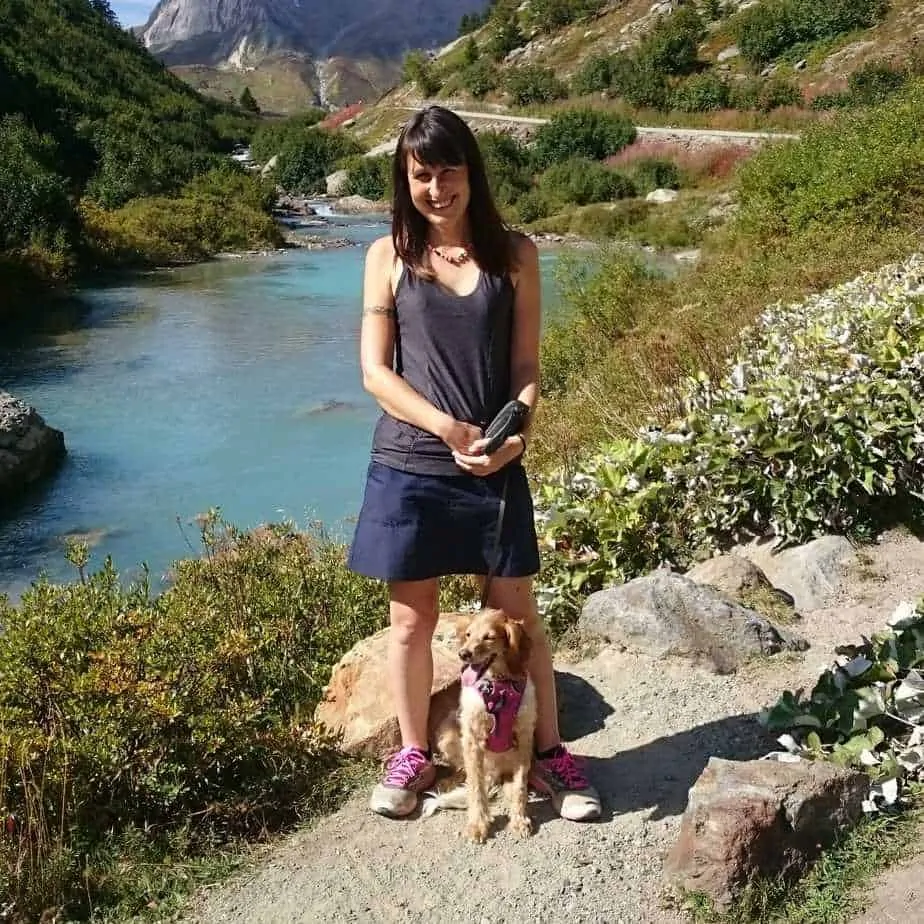
Gemma is an official dog nut and passionate traveller. Originally from the wonderful city of Edinburgh in Scotland, Gemma is now wandering across Europe with her rescue dog Annie. For ten years Gemma loved being surrounded by all things canine 24/7 whilst she ran a specialist doggy shop. The shop was a great community hub and, along with working closely with local rescues, Gemma provided customer support relating to canine behaviour and nutrition. It was a passion project and one that Gemma felt privileged to have created. She is also studying towards an Advanced Diploma in Canine Behaviour and is a huge advocate of dog rescue and promoting scientific methods of dog training.




